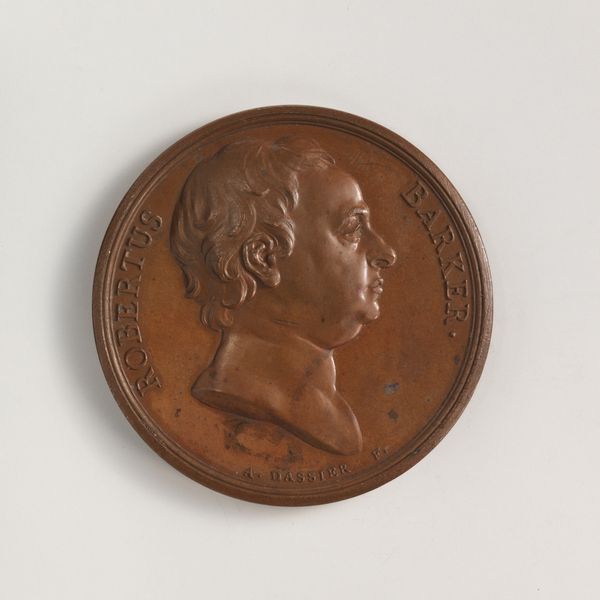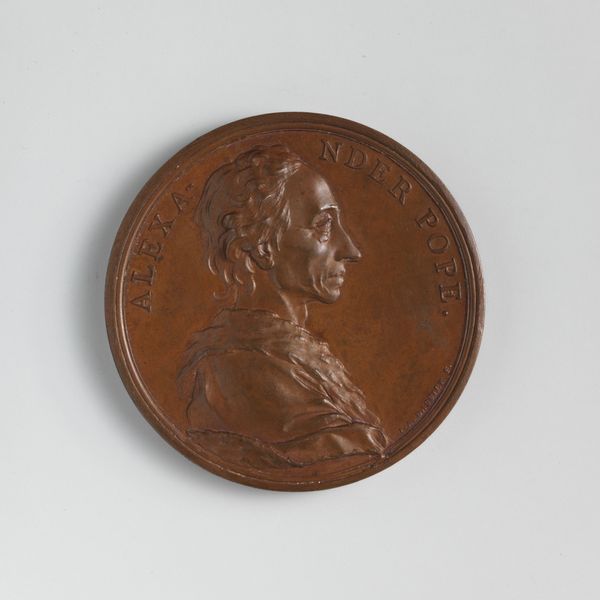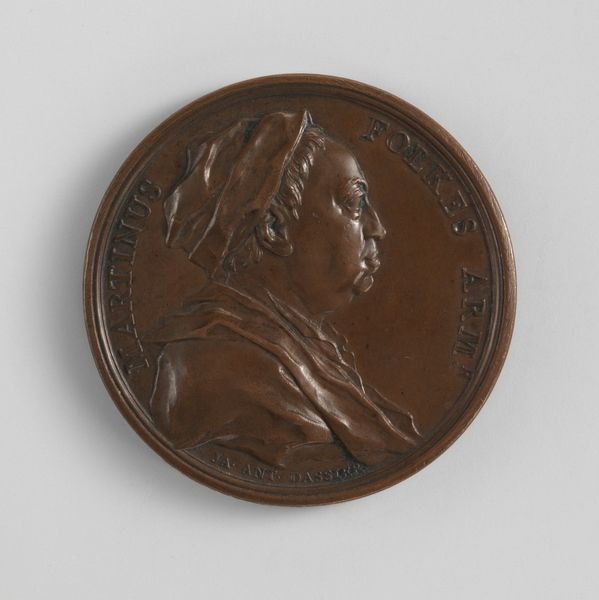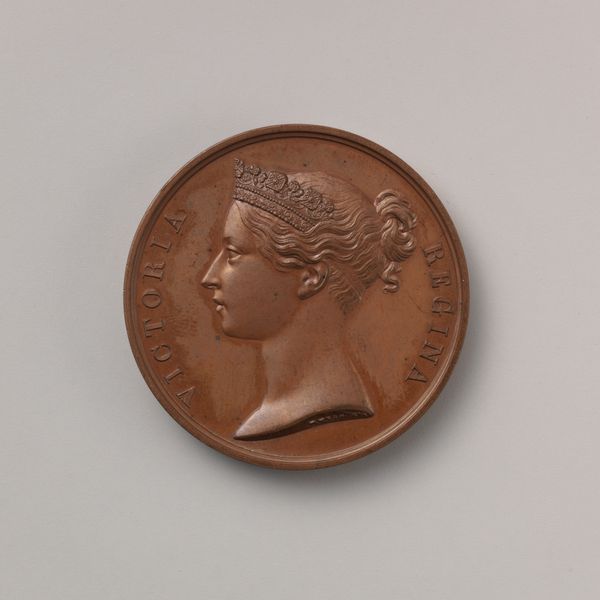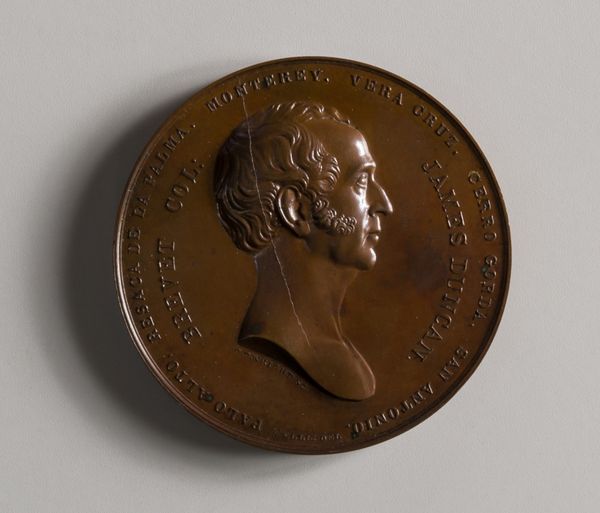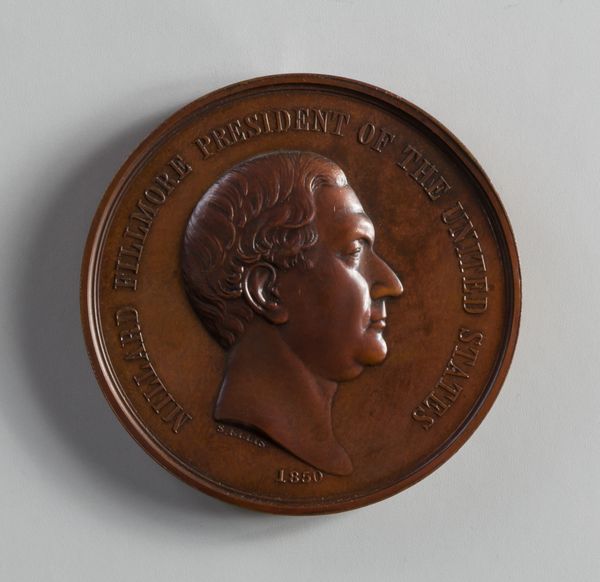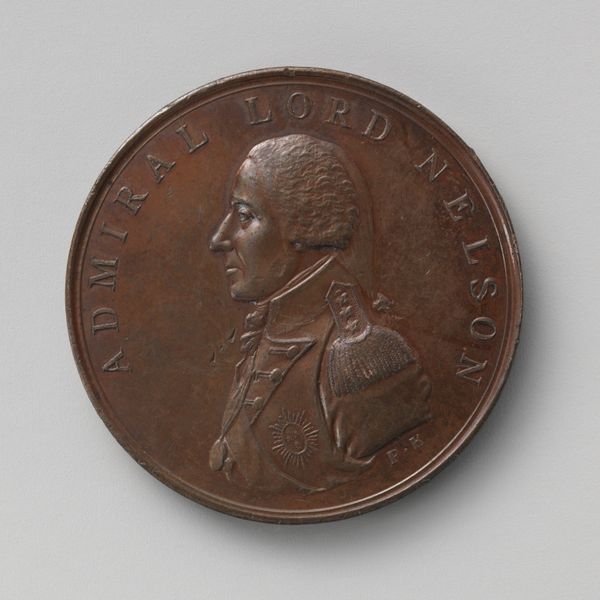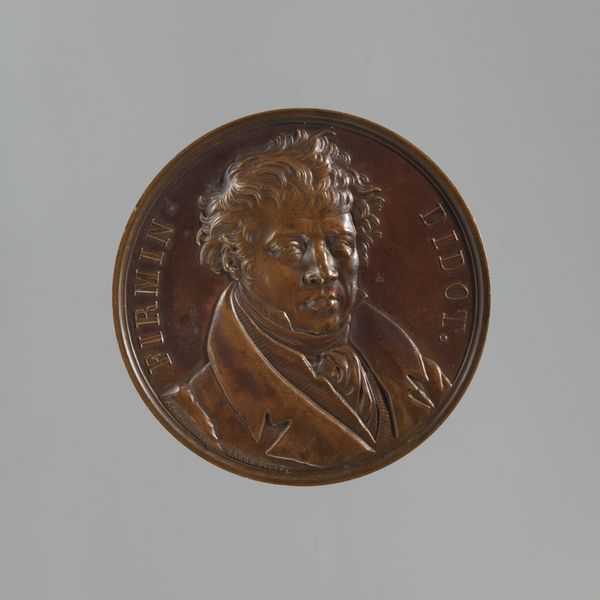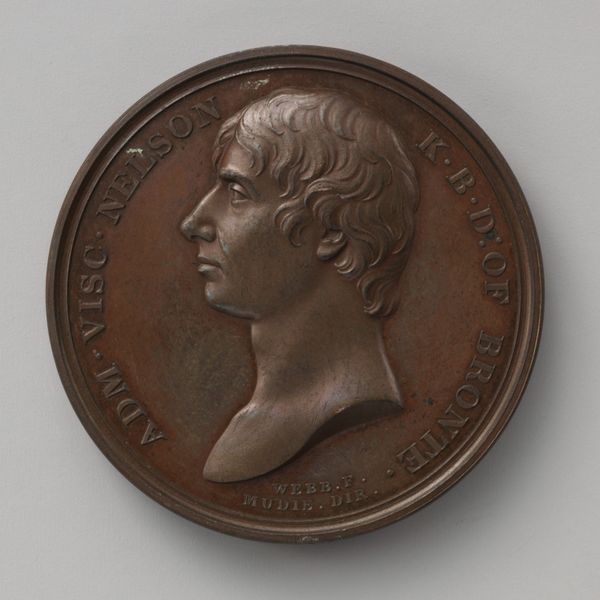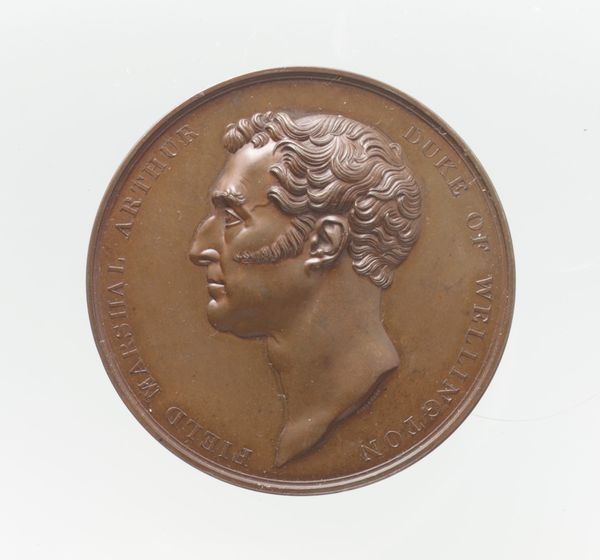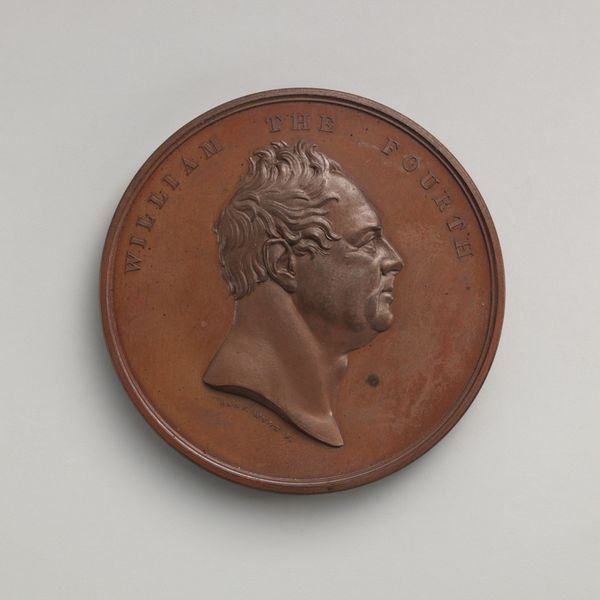
metal, sculpture
#
portrait
#
medal
#
neoclacissism
#
metal
#
classicism
#
sculpture
#
decorative-art
Dimensions: Diameter: 2 1/8 in. (54 mm)
Copyright: Public Domain
Editor: Here we have William Wyon's 1830 "Royal Academy of Arts Medal," a metal sculpture held in the Metropolitan Museum of Art. It feels so official, and stoic somehow. What can you tell me about it? Curator: Medals like this were powerful tools of institutional self-promotion. The Royal Academy, as a relatively new institution in 1830, sought to legitimize itself and its role in shaping British art. Editor: So, how does this particular medal do that? Curator: Look at the profile portrait. The style clearly evokes classical Roman coinage. Who do you think is being portrayed? Editor: Probably royalty. It certainly looks regal. Curator: Indeed. It is King William IV, and presenting him in this style associated the academy with the power and legitimacy of both the British monarchy and the classical world – neat trick, isn't it? Editor: It is! So the very *form* of the medal promotes the academy’s agenda. Curator: Precisely. It reinforces their artistic principles too, adhering to Neoclassical ideals of order and reason. Consider what's excluded – emotional expression or revolutionary artistic statements. Editor: I see. It is projecting an image of stability and authority. Something like subtle propaganda then. Curator: In a way, yes! This piece becomes more than just decoration; it’s an important cultural object. Editor: That really gives me a different appreciation for what a medal can *do*, not just *be*. Curator: Exactly. Recognizing that medals operate beyond mere aesthetic value transforms our experience.
Comments
No comments
Be the first to comment and join the conversation on the ultimate creative platform.
